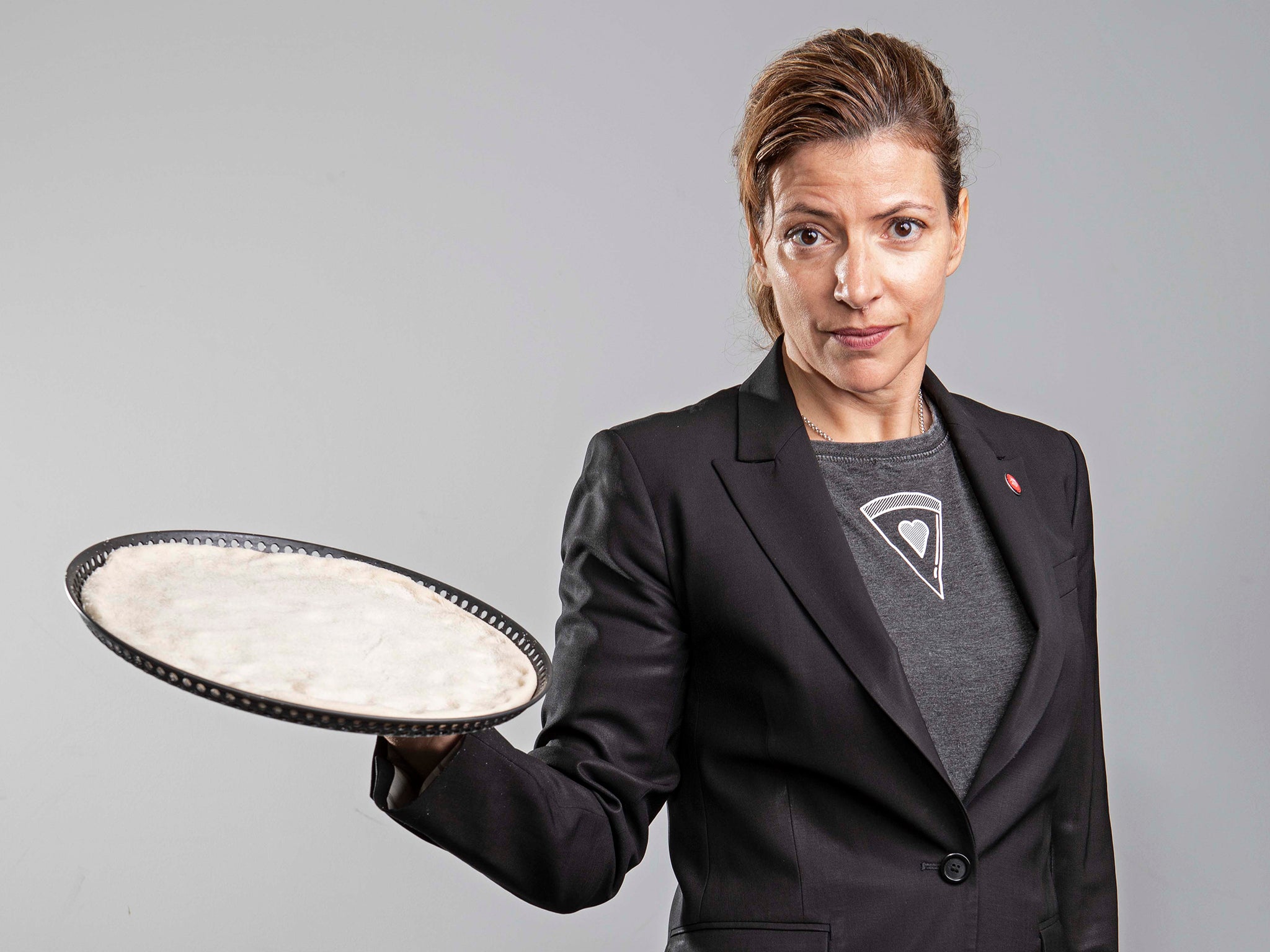A view from the top with Pizza Hut managing director Regina Borda
The Swiss-born, American-educated entrepreneur tells Andy Martin how she makes Pizza Hut international, while keeping the company's American roots


If ever there was a truly international food it’s pizza. So it seems appropriate that Pizza Hut should have the very international, globetrotting Regina Borda fronting its operation as managing director for Europe and Canada. She looks like a UN ambassador who happens to be wearing a T-shirt emblazoned with the slogan, For the Love of Pizza. “It’s a magical food,” she says at her base in Holborn. “An opportunity to share.” They ought to parachute her into major conflict zones bearing pizza boxes.
Now 45, she was born near Bern in Switzerland to a German father and French mother and had to learn three languages straight off the bat (French, German, Italian). Now she speaks five fluently and can fake it in one or two more. I can certify that her English is perfect. “In Switzerland if you drive 10 minutes in any direction you find people are speaking a different language. So you have to adapt. Otherwise you run out of people to speak to.”
After studying “cultural anthropology” at the University of Fribourg, Borda did her MBA in Miami, where she met her Colombian husband. “In Colombia they use different hands for the knife and fork. There is no right way. The advantage of pizza is it’s easier to use your hands. Roll up your sleeves and dig in.”
She originally thought of joining the Swiss Foreign Service, but was offered a job by Hershey instead. “I didn’t like Hershey bars, I preferred Lindt. But they were trying to build up their international side, so it was a challenge. Chocolate is so connected to childhood. It depends what you grow up with.” After cranking up operations in Brazil and Japan she took up a post with KFC and landed in Germany. But her husband never learned the language so they went to California and she joined Taco Bell.
Other than specialising in “restaurant excellence” and organising scholarships for underprivileged kids, she tried her hand at surfing, but discovered she was better at running. “I lacked skill. Anybody can run.” She took up marathon running and missed the 2013 Boston marathon bombing by a whisker, qualifying for the event in the following year in conditions of high security. Her best time is 3.38. “That was my high point,” she says. “After that I lost motivation.”
Now she goes running on Hampstead Heath (“fair weather” only) while thinking about “global marketing”. She is adapting to life in the UK. “It’s a bit of a shock after California. But I’ve learned that a nice cup of tea can fix any problem.” She also says “lift” rather than “elevator”, even if her 14-year-old son has now started speaking with a pronounced Texan drawl and insisting on “fries” rather than “chips”.
But Pizza Hut has likewise retained its American roots. If you walk into the Pizza Hut on the Strand, just down the road from Trafalgar Square, as I did, it feels like walking into smalltown America, with a poster advertising a superhero I hadn’t come across before, “Captain Pizza”.
Pizza Hut originated in 1958, in Wichita, Kansas, cofounded by two brothers, Frank and Dan Carney. According to legend, they only had enough room on the sign over the new restaurant for eight letters and a space. Five went to “Pizza”, and they squeezed in “Hut”, partly because the bar they had taken over resembled a hut. They painted the roof red and an icon was born. “They wanted to make it accessible,” says Borda. “We are doing artisan pizza, but it’s American-inspired, not Italian.”
Borda says that they are always testing through their customers. But they have conducted semi-scientific blind tasting tests, involving 400 people and a hell of a lot of pizza, of different brands. Pizza Hut pizzas consistently come out ahead of their rivals in terms of crispiness, temperature, texture, cheese. Borda uses the acronym, “JAR”, Just About Right. She also describes the Pizza Hut brand with words like “naïve”, “optimistic” and “casual”. She adds, “I can say whatever I like about the pizzas, but if it’s not true for customers then it’s not true.” She wants people not just to “buy the brand” but to “buy into the brand”.
When the first Tanzanian Pizza Hut opened in 2016, they hit the grand total of 100 countries in which they have a presence. By way of celebrating the achievement, Borda undertook to deliver a pizza on top of Mount Kilimanjaro in association with Yum! Brands. “It took our team six days to get up there. It only took a local expert six hours to run up with the pizza.” She didn’t say if it was still hot when it got to the top. But it’s in the Guinness Book of Records for the “highest pizza delivery on Earth” (19,347 feet).
Having hit the highest altitude, Borda feels obliged to point out, “It’s not pretentious haute cuisine, it’s down to earth.” But they are adapting to different contemporary trends. You can now buy a vegan pizza in Pizza Hut. “It still has to be the best-tasting vegan pizza,” she says. They’ve also gone digital. Press a button and it gets delivered. The other innovation is paying up front for the pizza. “Somebody still brings you your pizza,” says Borda. “You can see your pizza being made in front of you. But when you’re done you leave. People like to be in control.” One thing I liked about the Pizza Hut on the Strand is that they throw in the salads for free. And, if you get that far, there are unlimited M&Ms to go on the ice cream.
Join our commenting forum
Join thought-provoking conversations, follow other Independent readers and see their replies
Comments